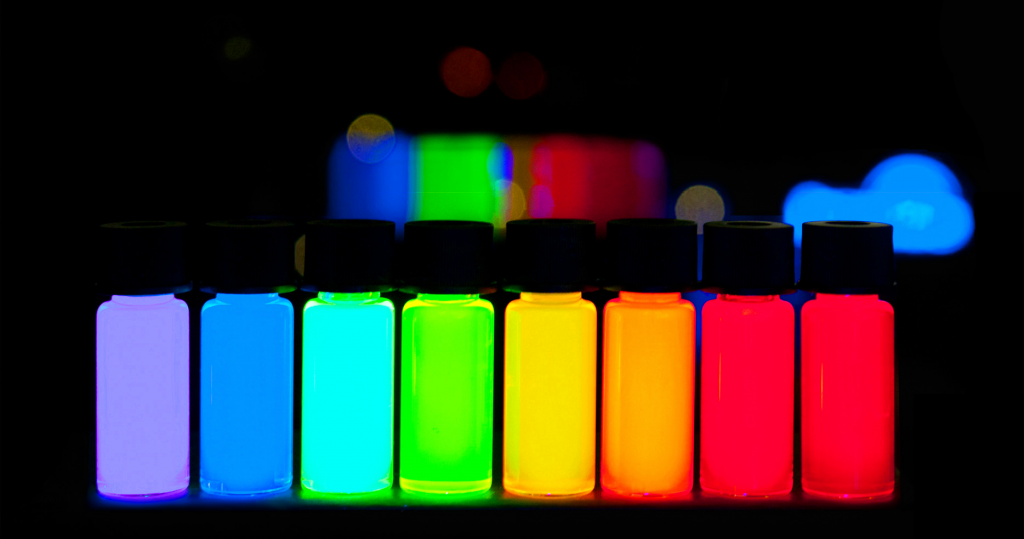A new, luminescent 3D printer material has been created in experiments at the University of Miami and, according to results, it could be used to make sunglasses or other devices that protect us from damaging rays of UV light.
The ink, made for light-based stereolithography (SLA) 3D printing, has been made by mixing glowing, orange carbon dots (O-CDs) with a previously unreported superabsorbent polymer.
Quantum dots in 3D printing
First discovered in 2004, carbon quantum dots (CQDs) are luminous nanoparticles produced by breaking down larger carbon structures such graphite and nanotubes, or building-up small carbon structures like carboohydrates. They are water soluble and non-toxic to living organisms, meaning they are finding a range of applications in medicine. Additionally, CQDs can be used in making solar cells and, in 3D printing, have been investigated as a technique for adding invisible signatures to prevent the distribution of counterfeit goods.

A unique 3D printer ink
In the University of Miami team’s research, O-CDs are distributed through sodium polyacrylate (SPA), a sodium salt commercially used to make baby diapers, artificial snow and wound dressings. As a superabsorbent polymer, O-CDs were absorbed by a SPA powder as a water solution. To finish the ink, O-CD loaded SPA was mixed with a photopolymer to make it solidify on contact with light.

As a test, the specially formulated ink and a naked dummy ink for comparison, were 3D printed using a Formlabs desktop SLA system into a model of the Statue of Liberty.
Glowing applications
From this study, researchers have determined the O-CD to photopolymer ratio that results in a successful 3D printed object. In addition, the team discovered that O-CD inks can be 3D printed without affecting their photoluminescence (PL).
In the conclusion, researchers state, “O-CDs may be applied to future 3D printing of many designs and industrial products such as UV light converters, sunglasses and probes for environment, biological or medical purposes, which benefits from their PL properties and small sizes.”

“Embedding Carbon Dots in Superabsorbent Polymers
for Additive Manufacturing” is published open-access in Polymers journal. It is co-authored by Yiqun Zhou, Keenan J. Mintz, Cagri Y. Oztan, Sajini D. Hettiarachchi, Zhili Peng, Elif S. Seven, Piumi Y. Liyanage, Sabrina De La Torre, Emrah Celik and Roger M. Leblanc.
For more of the latest additive manufacturing research sign up to the 3D Printing Industry newsletter, follow us on Twitter, and like us on Facebook.
On the lookout for new talent or seeking a career change? Search 3D Printing Jobs for jobs in engineering, marketing, management and more.
Featured image shows a glowing Statue of Liberty 3D printed using the University of Miami’s quantum dot material. Image via Polymers journal.


